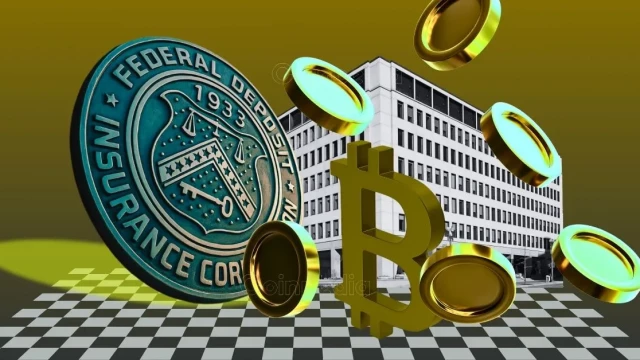
FDIC Blockchain Policy: Why the US Is Preparing for Tokenized Deposits and Regulated Stablecoins
CoinPediageneral
The US Federal Deposit Insurance Corporation is preparing to take a more active role in the future of blockchain technology. Acting Chair Travis Hill recently revealed that the agency is evaluating how deposit insurance could function in a tokenized format, while also developing a structured pathway for stablecoin issuers.
📋 Article Summary
The US Federal Deposit Insurance Corporation (FDIC) is taking significant steps to prepare for the growing influence of blockchain technology and digital assets in the financial landscape. In a recent announcement, Acting Chair Travis Hill revealed that the agency is actively exploring how deposit insurance could be adapted to accommodate tokenized deposit models, as well as developing a structured regulatory framework for stablecoin issuers.
This strategic move by the FDIC signals a recognition of the transformative potential of blockchain-based financial products and the need to ensure appropriate safeguards are in place. As the use of cryptocurrencies and stablecoins continues to gain mainstream adoption, the FDIC's proactive approach underscores the importance of integrating these innovative technologies into the existing financial system in a prudent and regulated manner.
One of the key areas the FDIC is focusing on is the possibility of extending deposit insurance coverage to tokenized deposits. This could provide enhanced security and consumer protection for individuals and businesses holding digital assets, akin to the current protections for traditional bank deposits. By exploring this concept, the FDIC aims to address concerns about the safety and stability of blockchain-based financial products, potentially paving the way for greater mainstream acceptance and adoption.
Additionally, the FDIC is working on establishing a structured regulatory pathway for stablecoin issuers. Stablecoins, which are cryptocurrencies pegged to a stable asset like the US dollar, have emerged as a critical component of the digital asset ecosystem, facilitating transactions and serving as a bridge between traditional finance and the crypto world. The FDIC's efforts to develop a comprehensive regulatory framework for stablecoin issuers could enhance transparency, mitigate risks, and foster greater institutional and consumer confidence in these innovative financial instruments.
The FDIC's proactive stance on blockchain and digital assets reflects a broader shift in the US government's approach to regulating the cryptocurrency industry. Policymakers and regulators are increasingly recognizing the need to strike a balance between fostering innovation and maintaining financial stability and consumer protection. By taking a leading role in this space, the FDIC is positioning itself as a key player in shaping the future of the crypto ecosystem, ensuring that it is integrated into the traditional financial system in a safe and responsible manner.
As the FDIC continues to explore these developments, industry experts anticipate a significant impact on the broader cryptocurrency market. The integration of deposit insurance and regulated stablecoin frameworks could attract greater institutional investment, driving increased liquidity and mainstream adoption of digital assets. Additionally, the FDIC's regulatory guidance could serve as a model for other jurisdictions, potentially leading to a more harmonized global approach to cryptocurrency regulation.
In conclusion, the FDIC's proactive stance on blockchain and digital assets reflects the agency's recognition of the transformative potential of these technologies and its commitment to ensuring that the financial system is prepared for the future. By developing innovative solutions and regulatory frameworks, the FDIC is poised to play a pivotal role in shaping the integration of blockchain-based financial products into the traditional financial landscape, ultimately benefiting both consumers and the broader crypto ecosystem.